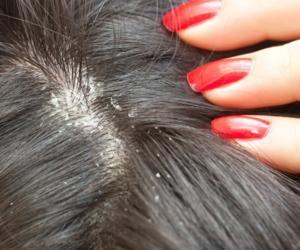Where Are Ingrown Hairs Most Likely to Form?
Areas of the body most prone to form ingrown hairs

In normal cases, shafts of hair pierce the skin pores called follicles, and emerge externally to form a protective covering for skin. Sometimes, the same hairs curve backward and re-enter the skin creating small bulbous fluid-filled sacs, that become prone to infection. Such a condition is called an ingrown hair. It is visually unappealing, and painful once infection develops. Incorrect shaving methods, excessive drying up of the skin surface, and tight body-hugging garments usually trigger ingrown hairs.
Ingrown hairs are most likely to form in the following parts of the body:
- Cheeks, specifically areas bordering the jawline and chin
- Upper part of the neck and chest
- Scalp and brow
- Lower limbs and pubic region
Ingrown Hair on the Lower Limbs
Improper shaving routines can cause ingrown hairs. Strong hair waxes and chemical peelers may also irritate and possibly harden the skin.
Solution: Dead cells block pores, dirt and grime can spread infection, and excessive oil secretions might clog pores as well. The immediate remedy is regular exfoliation followed by a deep skin cleansing routine.
Tips:
- Avoid shaving in the morning when circulation of blood is low or sluggish
- A hot shower can soften skin tissue prior to shaving
Ingrown Facial Hair
Ingrown hair is more problematic in individuals with coarse, stringy, and curly hair. Shaving in the direction opposite to which hair is growing creates a tugging action resulting in raised “razor bumps.”
Solution: Avoiding improper shaving procedures that stress out skin, and following a routine that preserves the skin’s moisture levels.
Tips:
- Avoid shaving over dry skin using talc
- Use a good lubricating gel to prevent razor burn
- Use only sharp-edged razors, and change razors after repeated use. Check Getarazor blog before buying a new razor.
- Use single strokes and avoid repetitive motions
- Hold the razor lightly to prevent too close a shave
Ingrown Neck Hair
This is seen mostly in those who maintain beards. Razor bumps recur frequently, and may become swollen and pus filled following infection.
Solution: A warm bath following a shave helps in opening up clogged pores. This could be followed with a topical antibiotic and moisturizer to fight infection, curb irritation and protect the skin from excessive dryness.
Tips:
- Mix three drops of tea tree oil with a small quantity of water, apply in affected spots, and allow ten minutes for the oil to penetrate and sanitize pores
- Salicylic acid creams and lotions help exfoliate dead cells without irritating the skin
Ingrown Scalp Hair
This usually occurs in individuals that shave their head frequently. Scalp hair is the thickest and hardest of body hair. When the hair is cut extremely short, sharper edges have the potential to inflict damage when the hair shaft curves inwards to penetrate the skin. The skin tissue immediately rejects the ingrown hair as a foreign object and compresses the shaft in a sac-like structure that gathers fluid and pus.
Solution: Keeping hair trimmed but avoiding the close shave is the best solution to this embarrassing problem.
Tips:
- Hair shortened to the scalp is more likely to develop ingrown hairs
- Hair trimmed while retaining its wavy nature is advisable
- Use gentler, nonabrasive shampoos that do not fry the scalp
- Use a rough cleaning cloth to scrub the scalp skin, improves circulation














